Healthy Eating Guide For Children
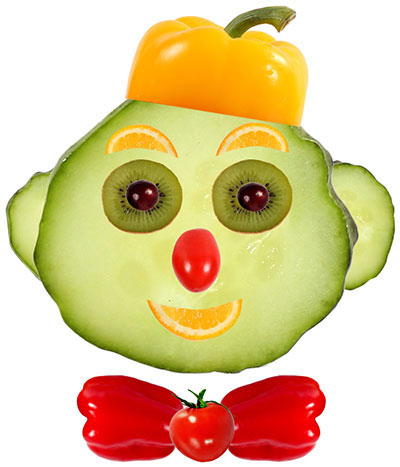 From 2 years of age, it is time to begin teaching the important healthy eating habits that will set the tone for your child's long-term health and well-being. What foods are healthy foods for a growing child? Simply put, natural whole foods that are free of chemicals, processing, and genetic modifications.
From 2 years of age, it is time to begin teaching the important healthy eating habits that will set the tone for your child's long-term health and well-being. What foods are healthy foods for a growing child? Simply put, natural whole foods that are free of chemicals, processing, and genetic modifications.
Remember, children cannot crave unhealthy foods if they were never fed them in the first place!
Let's take a look at the healthiest food choices for children, and also talk about why synthetic supplements should never be a part of a healthy child's diet.
Making Healthy Food Fun!
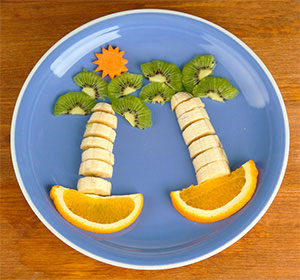
One of the best (and funnest!) ways to get children excited about healthy food is to create interesting and creative pictures on their plate. Work on this together, and try different pictures using different fruits and veggies each time.
Smoothies are also a great way to combine veggies and fruits into a tasty combination - popping a bunch of Swiss chard or spinach in a pineapple, berry, and banana smoothie is a fantastic way to eat greens that may not be so yummy by themselves.
Don't Feed Supplements
First of all, ask yourself why you are even considering giving supplements to your child. Supplements should only be used to treat a deficiency or health condition, and once that condition resolves, should be eliminated. There should never be a reason to give a child supplements if their diet is healthy, and if it is not, then the answer is to fix the problem rather than provide fractionated nutrients in the form of these artificial chemicals.
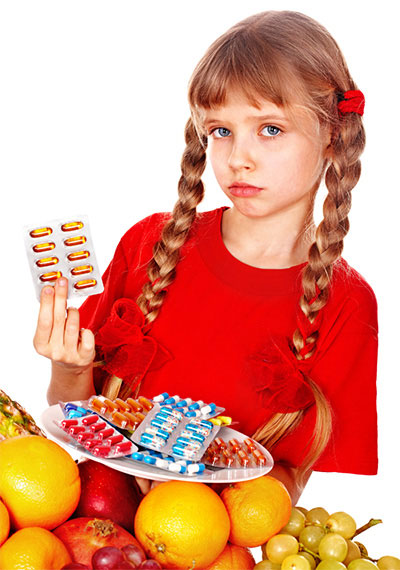
Most supplements are an artificial version of nutrients found in foods, nutrients that were never meant to be isolated. In whole foods, thousands of nutrients work together as a synergistic whole. We cannot extract a specific nutrient from that whole and expect it to do what it is supposed to do. Nature does not isolate chemical constituents because when they have been isolated, they no longer work as they should, nor are they absorbed as efficiently by the body. This is the reason most multivitamin and mineral supplements have extremely poor absorption rates.
Studies definitively show the body recognizes the difference between synthetic and natural nutrients, and that many commonly taken supplements such as folic acid and beta-carotene do more damage to the body than good.
 Learn more about why supplements are not the holy grail & why
Learn more about why supplements are not the holy grail & whyyou should only choose natural supplements from whole foods:
The Body Healer Protocol...
Offer Only Healthy Treats
Fun treats can include all sorts of natural foods that should not always be "sweet" in nature. Encourage your child to explore different foods and combinations, and look for exciting ways to prepare the same foods. Even the way food is arranged on the plate can be fun and creative!
- Chewing on sugar cane, available now in many food stores
- Scooping out coconut flesh from a young coconut (young coconuts are white and have a "chiseled" look)
- Frozen bananas, or mashed up bananas spread on veggies
- Dates and dried figs
- Guacamole with carrots and raisins
- Zucchini mashed up with melted butter and sweet corn
- Smoothies (make it an interactive experience when your child comes up with interesting combinations to try!)
- Dehydrated fruits and veggies
Never Force Children to Eat
If your child is not hungry, then let them take a break from a meal. Force-feeding is not a healthy practice, especially with foods they may have an aversion to. If there are some fruits or veggies your child gives the yucky face to, then let them try others instead - there are so many to choose from! Offer a variety of fresh foods and let their natural instincts gravitate them towards what they prefer. And remember... you can always sneak nutritious greens into fruit smoothies.
Young children are typically monotrophic, meaning that they like to eat one food item at a time. Intuitively, they know it is best for their digestion. Unfortunately, many parents insist that on a variety of different (and heavy) foods on every plate in fear the meal is not balanced. Not only is eating a mixture of complex food types at the same time much heavier on their digestion, but it can encourage overeating.
Things to Avoid
- Processed & refined foods
- The chemical revolution of toxic household & gardening chemicals
- Foods sprayed with pesticides
- Genetically modified foods (GMOs)
- Irradiated foods
- Microwaved foods
- Factory-farmed animal foods
- A water supply contaminated with household & pharmaceutical chemicals
- Food from China which can pose serious health risks
- Today's processed soy - an unhealthy food
Watch Out For "Fruit Juices"
Most juices in the store are pasteurized, have added sugar, are highly concentrated, and some have artificial colors, flavors, and other chemicals (don't look for logic as to why manufacturers add more sugar to already sweet fruit juices). Look for drinks that have been fresh squeezed or cold pressed. More and more choices are becoming available, although most are only available in health food stores. Brands such as Evolution and 'tude are a great choice for cold-pressed, healthy juices.
Always Read Ingredient Labels!
When you buy any packaged foods, ALWAYS read the ingredient list very carefully. It is a warning sign when a food label contains a long list of ingredients that you do not recognize as whole foods. Many so-called "health foods" are little more than processed junk.
When it comes to reading product labels, it can get very complicated very quickly. Here are some great tips to help you cut through the hype and zero in on only the good stuff:
First...
Make sure that almost every ingredient on the list is a whole food item you recognize. Examples of whole foods are tomatoes, carrots, lentils, parsley, peas, beans, quinoa, coconut, cacao, pineapple, almonds, cashews... (items that are in the list of foods at the top of this page).
Then...
Take a very close look at whatever is left:
| Does it contain the word "artificial" or "hydrogenated"? If so, ditch it. | |
| Does it contain genetically modified ingredients? If you don't see the "GMO-free" stamp on the label, ditch it. | |
Does it contain sugar substitutes? If so, ditch it. Examples include:
|
|
| Does it contain chemicals you do not recognize as food? If so, ditch it. | |
If the preservatives are not natural ones, avoid it. Natural preservatives include:
|
|
Does it contain processed soy or soy derivatives? If so, definitely ditch it. The only soy product listed should be "whole soybeans" or "edamame." Unfortunately, food manufacturers are very good at hiding processed soy derivatives behind such words as:
|
|
Does it contain processed corn? If so, definitely ditch it. The only corn product listed should be just plain "corn" or "sweet corn." Similar to soy, food manufacturers sneak corn derivatives into almost every processed food item:
|
RELATED ARTICLES
- Why kids are getting sicker & fatter
- Before birth - prenatal care
- Baby's first food
- Beginning solid food
- Healthy eating guide for children
- Why breast feeding is important
- Bone broth
- Pasteurized vs. raw dairy
- The health benefits of raw milk
- The importance of organic during pregnancy
- Serious dangers of pesticides in our food
- Vaccinations & children
- Healthy, strong teeth
- Tips on raising happy & healthy children
- Nurturing creativity & individuality
- Discipline & setting boundaries




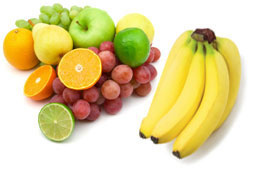 The variety of fruits is endless! Include all fruits such as apples, apricots, bananas, berries, grapes, melons, cherries, coconut, figs, kiwis, mangoes, mulberries, nectarines, oranges, papayas, peaches, pears, pineapple, watermelon, etc.
The variety of fruits is endless! Include all fruits such as apples, apricots, bananas, berries, grapes, melons, cherries, coconut, figs, kiwis, mangoes, mulberries, nectarines, oranges, papayas, peaches, pears, pineapple, watermelon, etc.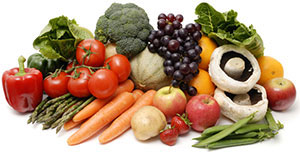 All veggies such as tomatoes, bok choy, broccoli, cabbage, carrots, cauliflower, celery, collard greens, cucumber, eggplant, potatoes, pumpkin, scallions and onions, root veggies, summer and winter squash, yams, etc.
All veggies such as tomatoes, bok choy, broccoli, cabbage, carrots, cauliflower, celery, collard greens, cucumber, eggplant, potatoes, pumpkin, scallions and onions, root veggies, summer and winter squash, yams, etc.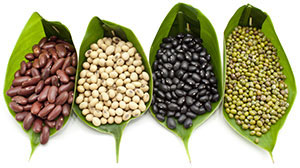 All legumes such as beans (e.g. azuki beans, chickpeas, black beans, pinto beans), peas, and lentils. Legumes especially contain a more complete set of amino acids (protein building blocks) than many other plant foods.
All legumes such as beans (e.g. azuki beans, chickpeas, black beans, pinto beans), peas, and lentils. Legumes especially contain a more complete set of amino acids (protein building blocks) than many other plant foods.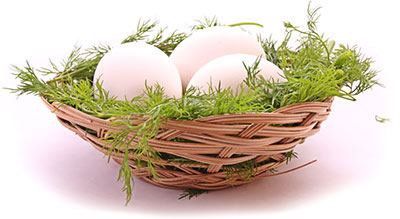 In small quantities. Meat & eggs should always be from pasture-raised animals and preferably organic. Organ meats are especially nutritious. Always avoid purchasing factory-farmed meat as it contains antibiotics, hormones, and other chemicals, and supports cruel and inhumane factory farming practices.
In small quantities. Meat & eggs should always be from pasture-raised animals and preferably organic. Organ meats are especially nutritious. Always avoid purchasing factory-farmed meat as it contains antibiotics, hormones, and other chemicals, and supports cruel and inhumane factory farming practices.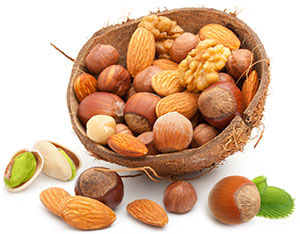 Nuts include almonds, Brazils, cashews, flaxseeds, hazelnuts, macadamias, pecans, pine nuts, pistachios, poppy seeds, pumpkin seeds, sesame seeds, sunflower seeds, walnuts, etc. When purchasing nut milks, remember to avoid the processed kind that contain other artificial or unhealthy ingredients.
Nuts include almonds, Brazils, cashews, flaxseeds, hazelnuts, macadamias, pecans, pine nuts, pistachios, poppy seeds, pumpkin seeds, sesame seeds, sunflower seeds, walnuts, etc. When purchasing nut milks, remember to avoid the processed kind that contain other artificial or unhealthy ingredients.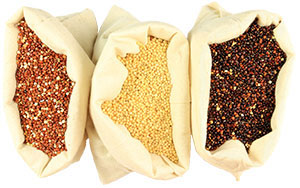 A staple in many indigenous cultures around the world, whole grains such as rice, millet, barley, bulgur, kamut, spelt, quinoa, amaranth, buckwheat, rye, oats, and oatmeal, in olden times were very different from the processed and genetically modified grain products of today.
A staple in many indigenous cultures around the world, whole grains such as rice, millet, barley, bulgur, kamut, spelt, quinoa, amaranth, buckwheat, rye, oats, and oatmeal, in olden times were very different from the processed and genetically modified grain products of today.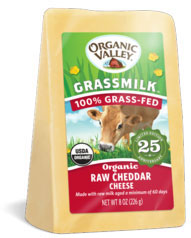 Preferably unpasteurized (raw) cheese and milk products that have their enzymes and nutrients fully intact. Examples include butter, cheese, yogurt, cottage cheese, ice cream (with no processed sugars or other unhealthy ingredients added ingredients), and sour cream.
Preferably unpasteurized (raw) cheese and milk products that have their enzymes and nutrients fully intact. Examples include butter, cheese, yogurt, cottage cheese, ice cream (with no processed sugars or other unhealthy ingredients added ingredients), and sour cream. 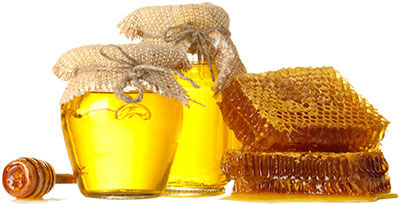 Natural sweeteners include raw honey, coconut sugar, maple syrup, black strap molasses, and unrefined cane sugar, etc.
Natural sweeteners include raw honey, coconut sugar, maple syrup, black strap molasses, and unrefined cane sugar, etc.